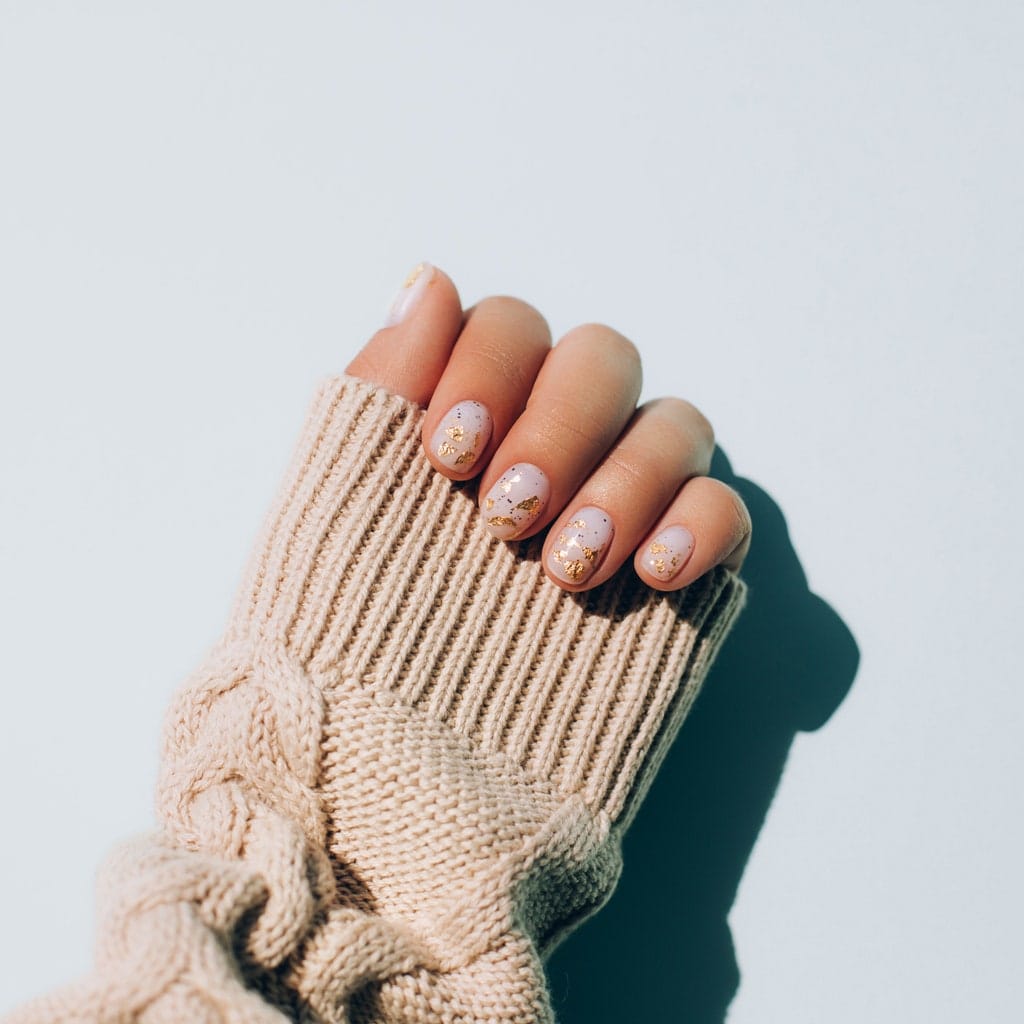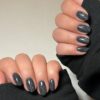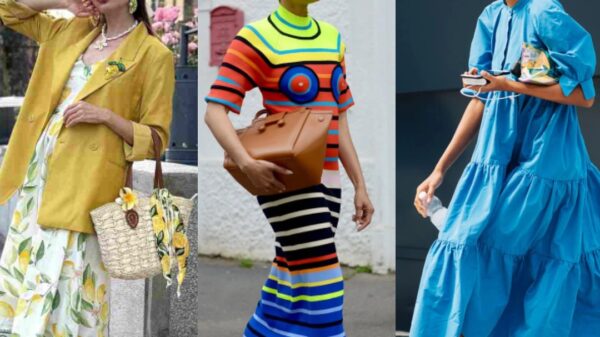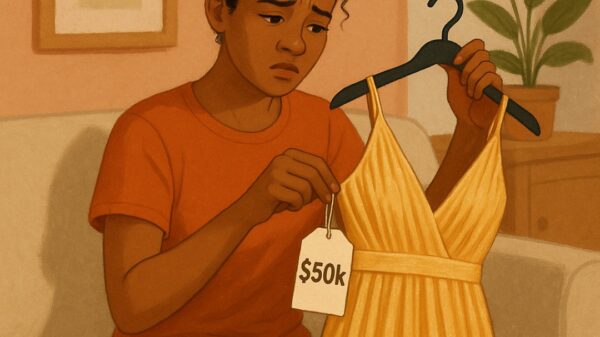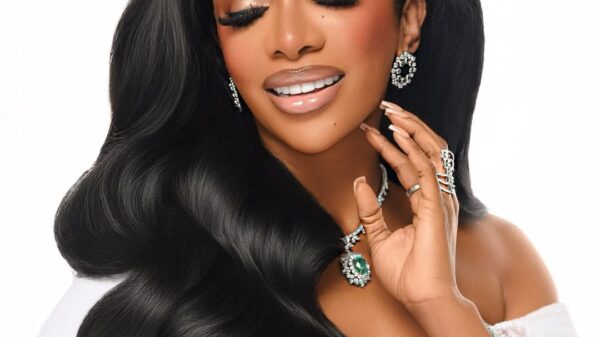Acrylics, gels, dip powder, and extensions… there are many different options when it comes to manicures — and each has its own distinct advantages and disadvantages. Gel nail polish and dip powder, two of the most popular manicure methods, both belong in the acrylic-based family but differ in a few important ways.
Whether you’re holding your breath until you feel safe visiting your favorite salon or you’re currently experimenting with DIY manicures (or both!), here are the key differences to know between gel and dip powder manicures.
1. Application Process
The primary difference between gel and dip powder manicures? The way they’re put onto the nail. “The easiest way to tell the difference between gel and dip powder is how they are applied,” explains manicurist Chelsea King. “With gel, it applies like regular nail polish and you cure it in a UV or LED lamp after each coat.”
Gel manicure polishes contain photo-initiated polymers, explains fellow manicurist Ashlie Johnson, which are activated when exposed to light. Essentially, “these polymers absorb [light] rays,” explains cosmetic chemist Ron Robinson. That causes them to “harden or cure so that the polish adheres to nails.” Most often this is done with a UV light, as it works a bit quicker than LED — usually in under 45 seconds. Simply speaking, gel polish is cured onto the nail using light (without the UV or LED light, it will remain wet).
Dip manicures, on the other hand, “use colored powder acrylic mixed with a glue-type resin that cures in the air,” Johnson explains. The application process is exactly what it sounds like. First, a base or primer coat is painted on, then each nail (while still wet) is dipped into a small pot of colored acrylic powder. Your manicurist (or you, at home) will work in layers. Once the desired level of coverage is reached (usually two to three rounds of dipping is required), an activator polish is brushed on as a top coat to cure the formula — no UV light required.
Bottom line: Gel polishes are painted on, similarly to regular nail polish, and require UV or LED light to harden. Dip powder involves dipping each finger into an acrylic colored powder, then painting on an activator polish as a top-coat that cures in the air.
2. Lasting Power
When applied correctly, a good gel manicure can last, on average, for two to three weeks. For those who tend to have oilier nail beds or are just prone to nail chipping, though, gel polish may not last for even two weeks.
Dip powder manicures generally last longer than their gel counterparts. To give you a sense of just how strong the hardened dip powder formula is, Deborah Lippmann, manicurist and founder of the namesake nail-care and color line, explains that “dip powders are bonded using a glue called cyanoacrylate, which is also the main ingredient in Krazy Glue.” To get more specific, cyanoacrylates are “a family of strong acting adhesives,” explains Robinson. Dip powder can be thought of as a glue-based resin that hardens when exposed to air (just like, you guessed it, actual glue).
Simply put, dip powder polymers are stronger than those found in gel polish, and, therefore, dip manicures will generally last longer — up to five weeks, if properly cared for.
Bottom line : Gel manicures typically last between two to three weeks, while dip powder manicures can last for up to five (with proper prep, application, and maintenance).
3. Removal Process
The acrylic-like, multi-layered (re: thick) nature of dip powder manicures can ensure that they last longer than gel, but it also means they are more difficult to remove.
“Overall, gel polish is much easier to remove than dip powder,” King explains. “They both need to be soaked off, but dip powder will take longer.” For both gel and dip powder, you’ll want to pencil in at least 30 minutes — either at the nail salon or at home — to get the job done.
The removal processes for both are similar in nature. First, the top layer of polish is gently sloughed off with a coarse nail file, then the nails are soaked in an acetone solution. For gels, this can be done via acetone-soaked cotton balls, but it’s necessary to soak fingers directly in a bowl of acetone to remove dip powder; typically your nails will need to be submerged for between 10 and 20 minutes.
4. Potential damage to nails
Impatience during the removal process can result in nail damage with both gel polish and dip powder. “Both manicures have the potential for damaging your nail beds, especially in the removal process,” Lippmann explains. “A lot of people get impatient with the amount of time that it takes for the gel to dissolve, and they end up pulling the polish off, which ends up damaging the nail.”
In order to avoid potential damage — with either gel polish and dip powder nails — you’ll need to patiently and diligently dissolve them using acetone, then follow up by consistently keeping your cuticles hydrated (the acetone can really dry out your skin). For those removing either at home, we recommend using an Allure editor favorite cuticle treatment such as Olive & June’s Cuticle Serum or L’Occitane Shea Nourishing Nail & Cuticle Oil (both Best of Beauty winners).
Bottom line : Both gel and dip manicures have the potential to damage your nail, but this can be avoided (or at least minimized) by following correct and patient removal and after-care protocols.
5. Sanitation
One of the biggest downfalls of dip powder manicures is that, when handled without care, they can be easily contaminated. “My biggest issue with dip powder is how sanitary it is,” King says. “For it to be sanitary, the powder needs to be in a separate container that your finger is dipped in or sprinkled over a separate container, and any leftover powder in that container you used should be disposed of afterward.”
When this sanitary protocol is followed in-salon as it should be, a lot of leftover powder does get discarded. In this sense, dip powder manicures can be wasteful, which is precisely why some salons will cut corners and use an unsanitary communal dipping pot.
Even though your nails will have been (or should have been) properly cleaned and sanitized before the base coat of polish gets painted on, communal pots can never be fully sanitary. “There are other things that could be in there, [like] bacteria, and even if you’re washing your hands beforehand, it’s just still not a good idea,” explains Catherine Troisi, an infectious disease epidemiologist at the University of Texas School of Public Health in Houston, Texas. “You [also] may have little cuts on your fingers, [especially] if they’ve trimmed the cuticles first.” Small cuts like that can increase your risk of infection greatly.
In simple terms, “you should never be going to a nail salon that would have you dip your finger into a communal jar,” Johnson says. This obviously does not apply if you are using at-home dip powder kits. Another option: Bring your own personal jar of dip powders to the salon with you, Johnson says. This way, you’ll know with full certainty that your fingers are the only ones being dipped into the pot.
Other red flags to look out for in terms of salon sanitation include making sure the tools used on you come in a sealed bag (this is called autoclaving), general cleanliness — and now, with regard to COVID-19, proper social-distancing measures. “The precautions taken with autoclaving, cleaning the tools, and disinfecting surfaces should be happening regardless of coronavirus,” Troisi says. “The new part for the current pandemic is the airborne transmission, and that’s what I would be more worried about [as a customer].” This includes limiting the transmission of airborne particles between patron and technician, and also limiting the number of customers in the salon at any given time.
Bottom line : The cost of in-salon dip manicures are usually slightly higher than gel manicures, though they both take the same amount of time to complete.
– Allure


